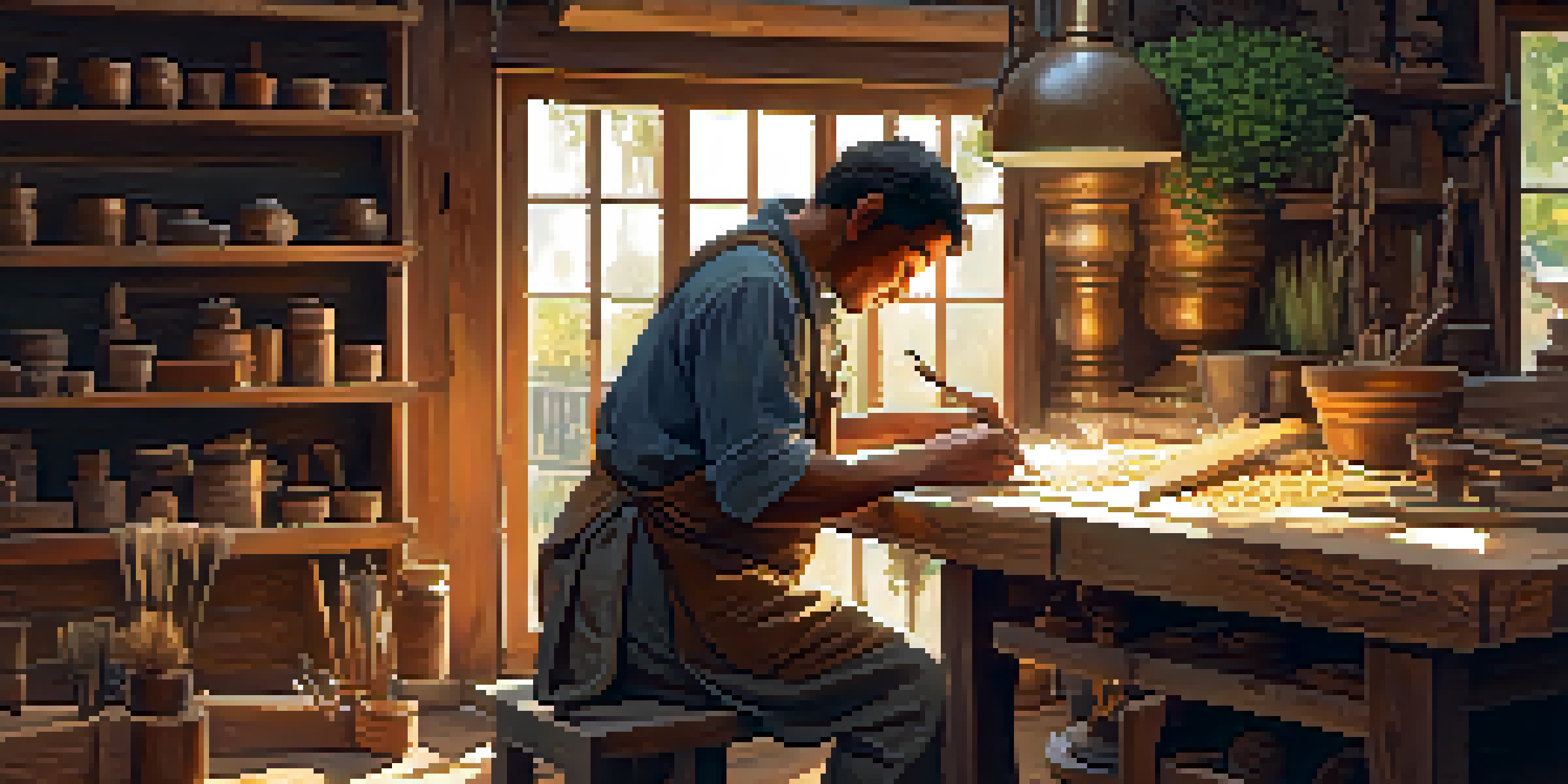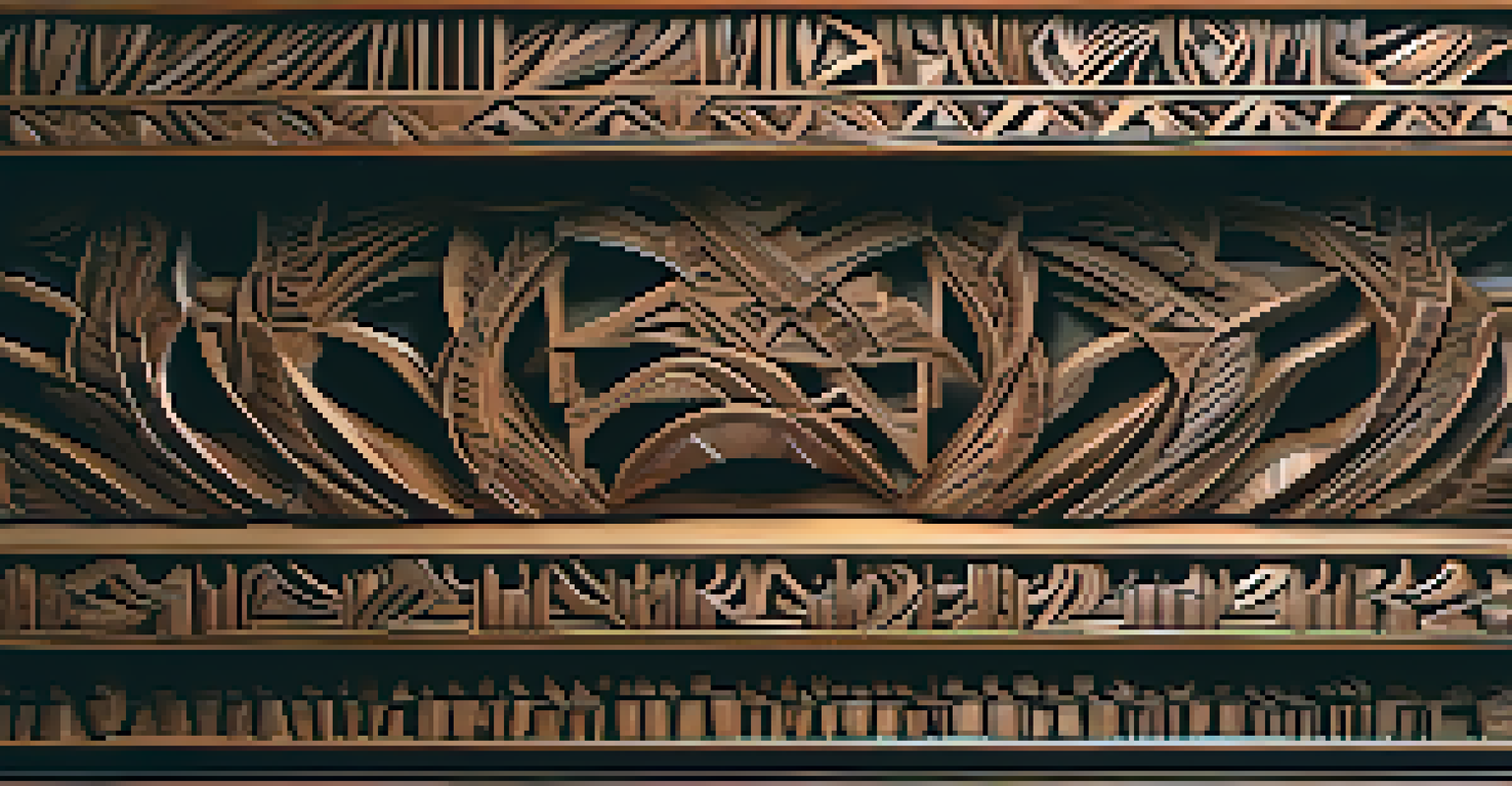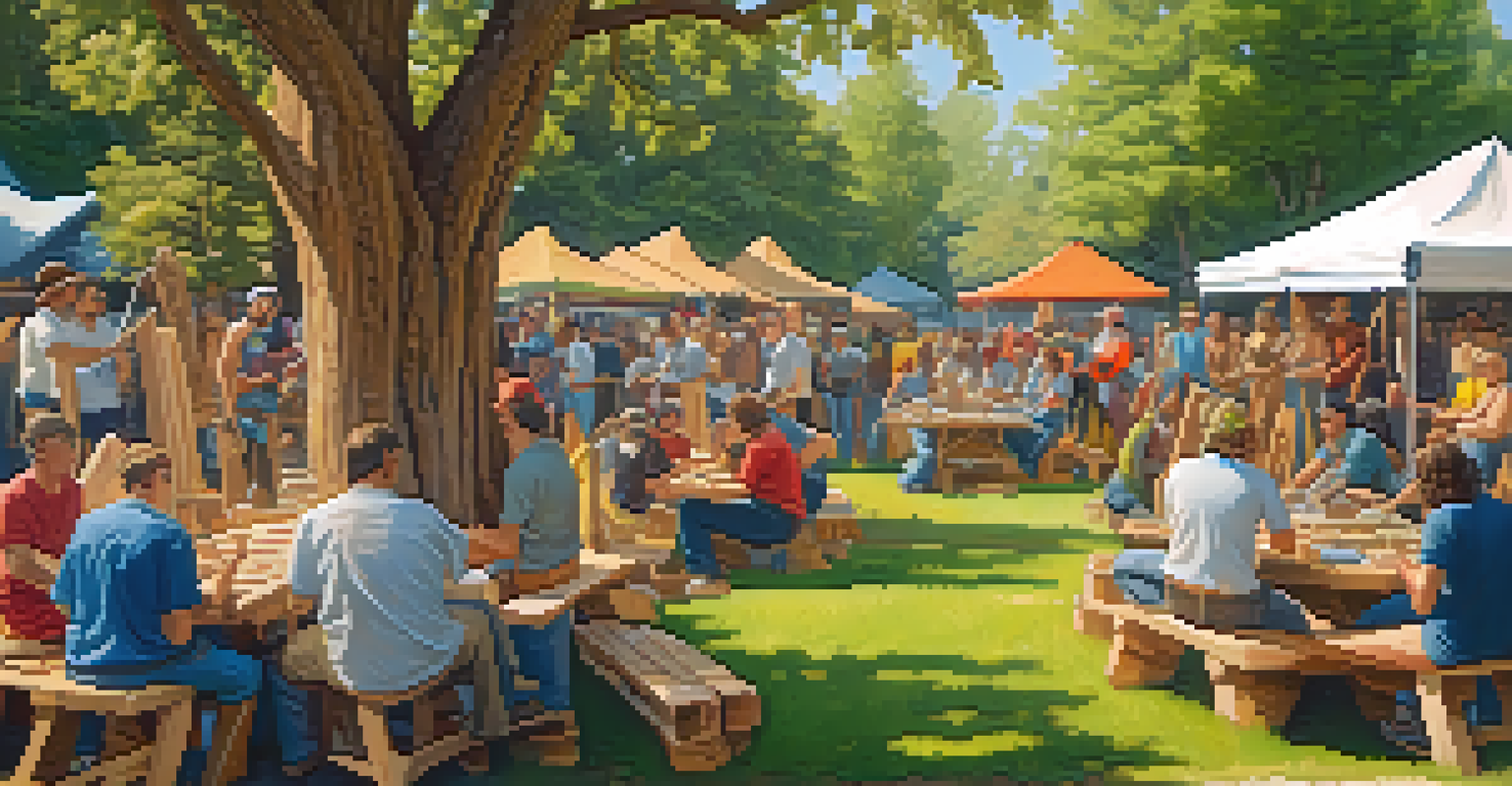Ethical Carving: Balancing Tradition and Modern Interpretation

Understanding Ethical Carving: A Brief Overview
Ethical carving is an art form that respects both cultural traditions and environmental sustainability. It emphasizes the importance of sourcing materials responsibly and honoring the heritage behind the craft. With growing concerns about deforestation and exploitation, artists are re-examining their practices to ensure they align with modern ethical standards.
Art is not a thing; it is a way.
At its core, ethical carving seeks to create beautiful pieces while considering the impact on our planet and communities. This approach not only preserves the craft but also fosters a deeper connection between the artist and their materials. By prioritizing ethical practices, carvers contribute to a more sustainable future for their art and the environment.
As we dive into the world of ethical carving, it becomes evident that merging tradition with modern interpretations is not just a trend; it's a necessary evolution. By exploring this balance, we can appreciate the rich history of carving while embracing innovative practices that benefit both creators and the world around them.
The Importance of Cultural Heritage in Carving
Cultural heritage is the backbone of carving traditions around the world. Each piece tells a story, reflecting the beliefs, values, and history of the culture it originates from. As artists work to preserve these traditions, they face the challenge of respecting their roots while adapting to contemporary contexts.

For instance, indigenous carving techniques often carry deep spiritual significance. When modern artisans incorporate these methods, they must consider the implications of cultural appropriation and ensure they honor the original creators. This delicate balance is crucial for maintaining authenticity and respect.
Ethical Carving Respects Traditions
Ethical carving emphasizes the importance of honoring cultural heritage while promoting environmental sustainability.
By elevating cultural heritage in ethical carving, artists not only pay homage to their predecessors but also foster a sense of community. This connection encourages collaboration and dialogue, bridging the gap between generations and ensuring that traditional practices continue to thrive in a modern world.
Sourcing Materials: The Ethical Dilemma
One of the greatest challenges in ethical carving is sourcing materials responsibly. Traditional carving often relies on wood, ivory, or stone, which can lead to environmental degradation if not harvested sustainably. Artists must be diligent in their research, seeking out suppliers who prioritize ethical practices and eco-friendly alternatives.
Sustainability is not a destination; it is a journey.
For example, many carvers now favor reclaimed wood or sustainably sourced materials that minimize environmental impact. This shift not only helps in preserving natural resources but also adds unique character to each piece. By choosing thoughtful materials, artists can create stunning works that reflect their commitment to the planet.
Ultimately, the decision of where to source materials can greatly influence the narrative behind a carving. By prioritizing ethical sourcing, carvers not only enhance the story of their work but also inspire others to consider the environmental implications of their choices.
Modern Techniques: Innovating the Craft
With advancements in technology, modern carving techniques are evolving in exciting ways. From laser cutting to 3D printing, artists are now able to experiment with new forms and designs that were once unimaginable. These innovations open up a world of possibilities while still allowing for the integration of traditional methods.
However, the incorporation of modern techniques raises questions about authenticity and craftsmanship. Some purists argue that technology detracts from the soul of the art, while others see it as a means to enhance creativity. Striking a balance between tradition and innovation is essential for the future of ethical carving.
Sustainable Material Sourcing Matters
Artists face challenges in sourcing materials responsibly, which is crucial for minimizing environmental impact.
By embracing modern techniques while respecting traditional values, carvers can create unique pieces that resonate with contemporary audiences. This fusion not only invigorates the craft but also invites a broader appreciation for the art of carving.
Community Engagement: Building Connections
Ethical carving thrives on community engagement and collaboration. Artists often participate in workshops, exhibitions, and cultural events that foster connections with fellow creators and the public. These interactions not only promote the art form but also encourage discussions around ethics and sustainability.
Local communities play a vital role in supporting ethical practices by providing resources and knowledge. By sharing their experiences and insights, community members help carvers navigate the complexities of ethical sourcing and cultural sensitivity. This collaborative spirit strengthens the bond between artists and their roots.
Furthermore, engaging with the community allows carvers to educate others about the importance of ethical practices. By sharing their journey, artists inspire a new generation to appreciate the craft and its significance, ensuring that carving continues to evolve responsibly.
The Role of Education in Ethical Carving
Education is a powerful tool in promoting ethical carving practices. By providing resources and training, aspiring artists can learn about the importance of sustainability, cultural heritage, and responsible sourcing. This foundation equips them with the knowledge to make informed decisions as they develop their skills.
Many institutions now offer specialized programs that focus on ethical craftsmanship, blending traditional techniques with modern values. These programs not only teach the technical aspects of carving but also emphasize the ethical implications of their work. This comprehensive approach prepares students for the complexities of the art world.
Education Shapes Future Carvers
Providing education on ethical practices equips aspiring artists with the knowledge to navigate the complexities of the craft.
As the next generation of carvers emerges, their commitment to ethical practices will shape the future of the craft. By prioritizing education, we ensure that the legacy of ethical carving continues to thrive and adapt, fostering a culture of responsibility and respect.
Looking Ahead: The Future of Ethical Carving
The future of ethical carving holds immense potential as artists continue to explore new ideas and practices. By embracing sustainability and cultural sensitivity, carvers can create works that resonate with diverse audiences. This evolution is essential for keeping the art form relevant in a rapidly changing world.
As we move forward, it is crucial for artists to remain open to collaboration and innovation. By working together and sharing their experiences, carvers can drive positive change within the industry, encouraging others to adopt ethical practices. This collective effort will help elevate the art of carving to new heights.

Ultimately, the journey of ethical carving is not just about the art itself; it's about the connections we forge and the values we uphold. By balancing tradition with modern interpretation, we can create a vibrant future for the craft that honors both our past and our planet.